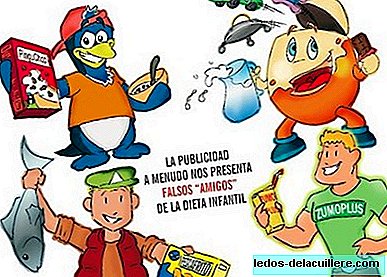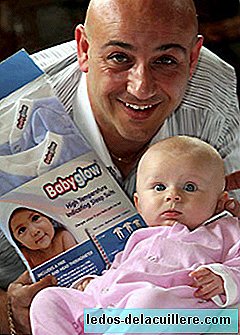
There are many food products on the market that are presented to us as optimal companions to the children's diet, but that are not as healthy as they might seem. They are the false "friends" of the children's diet, those who in advertising appear as ideals but who do not
Personally, the ads for certain sweets that talk about calcium or the vitamins they provide, without mentioning the fats, sweeteners and other components that don't sound so good and that would make them obviously less attractive.
Let's see what those are not so healthy foods For the little ones and for the whole family.
- Milk chocolate bars and others milk based sweets, although they provide calcium, they contain a lot of fats and sugars.
- One of the most frequent mistakes in infant feeding is to think that with the juices we give them fruit. But packaged commercial juices are not fruit. Fruits that are used to make juices are rarely fully squeezed, and also undergo heat and / or concentration treatments, so there is a deviation from the original composition of the fruit. Packaged juices can contribute excess calories and do not provide fiber. Excess sugar in juices is associated with childhood overweight. The acidity of these juices (which increases in the oral cavity with the intake of sugars) is associated with the risk of caries. Many of the properties and nutrients of the fruit are lost during the pasteurization process. Even so, there are many types of juices, from the most natural to the nectars based on concentrates that provide more calories. The amount of sugar (added or not) also varies from one juice to another. The addition of sugar is allowed in certain amounts and can sometimes be used to correct the excessive acidity of the juice, hide the addition of juices from other fruits or mask the shortage of fruit. There are other sugars such as sorbitol that added to the juice can cause gastrointestinal disorders. The juices are occasionally acceptable, but the problem lies, according to the Spanish Association of Pediatrics, in that its excessive consumption, along with that of soft drinks, favors a diet of low nutritional quality and can relegate to other healthier drinks such as water and milk. In addition, in his Nutrition manual They point out the low amount of fiber in juices and that special attention must be paid to juice substitutes because of their poor nutritional quality and energy content.
- Juices with milk are no exception to the previous ones, as they have similar characteristics. Given that children usually consume a sufficient amount of dairy products (even more than necessary), it does not seem appropriate to consume these products which, apart from containing a small amount of milk, are more expensive.
- Breakfast cereals They tend to present themselves as healthy energy sources, although as we have seen, not everyone is as healthy. Most contain excess sugar, honey or chocolate, so it should not be a food taken daily. The extra calories provided by these products come from the excess of sugars and fats.
- Breaded foods ready to fry, such as fish sticks, ham and cheese ... contain excessively saturated fats. The homemade option of these foods is better. In addition, as we mentioned in the recommendations to prepare the children's menu, the AEP advises to reduce the intake of fried foods.
- The products Light They are the ones that usually have the most sweeteners in their composition, especially soft drinks. Sugar-free sodas that carry calorie-free sweeteners still contain acids that damage teeth.
- A cola can contain the equivalent of one cup of coffee in caffeine. In general, soft drinks carry the same risks of obesity as juices due to excess sugars if consumed profusely.
As we see, everything that glitters is not gold, and in these false "friends" of the children's diet There is a lot of harmful or not too appropriate. I do not believe that their total exclusion from the diet is necessary, but they have to become something occasional and especially consumed with knowledge.












